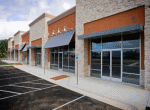
Once the dominant shopping environment, the high street is now struggling to survive. Online shopping means that consumers are able to access a wider range of products than ever before. Often the items that they are looking at are also cheaper than shop prices. Another contributing factor to the demise of the high street is of the course the economic crisis that has impacted on much of the world. Whilst consumers are still buying, many of the luxury items that they want have been put on the back burner in favour of essential items. In order to survive in these demanding times it is important for retailers to do all that they can, including creating a retail environment that is welcoming to their customers. A rule that applies to all businesses, no matter how big or small.
Feng Shui
Whilst it is perhaps going a little too far to suggest that you should be looking to utilise advanced Feng Shui in your shop; understanding the basic principles can help. The first point to consider is how welcoming your entranceway is to shoppers. This is perhaps the most important section of the shop as it acts as a transition area; where customers orientate themselves with their surroundings. Try not to have too many items on display in this area as it can have a negative impact on shoppers; making them feel pressurised from the off. Also avoid having shelving or cabinets positioned at a right angle to the door, which can act as a barrier and make the shop appear unwelcoming.
Colours are also important in the decor of a retail setting and you should try to avoid overly bold shades. For example, red has been shown to increase the heart rate and also blood pressure, which can have the undesired effect of unsettling your customers. You are better advised to go for soothing blues and greens, or soft pastels.
A natural flow
Once you have the entranceway on order, it is time to turn your attention to the shop floor. The last thing that shoppers want is to get lost in a maze of aisles. So try your best to lay out your displays in a fashion that flows naturally throughout the store. Whilst it is unlikely that you will be able to completely remove sharp angles, do your best to soften them wherever possible. By doing so you will often find that your customers take their time walking through the store rather than rushing. This of course allows them more time to spot items of interest, which in turn can help improve product sales.
Under stocking or overcrowding?
The final aspect to consider is how to best maximise the floor space that you have available to you. Whether you are renting, or own your own property, floor space does cost money. As such it can be tempting to cram the shop with as much stock as possible. The ability to secure goods at reduced prices when buying in bulk is also a factor in why many owners and managers stuff their shop floor. However, where display systems are packed in tight, it can be difficult for consumers to see what they are looking for. Also, tall shelving systems that are close together will leave customers feeling overpowered; again increasing the likelihood of them hurrying through your store. It is wiser to limit display systems to around head height and leave a decent amount of aisle space. Hopefully you will have enough room in the back of the store to keep your additional stock. If you don’t have this luxury then you could consider renting some self storage space at a local facility. Whilst this of course means an additional outlay, the upturn in sales figures will often more than cover the costs. If you do decide to rent some self storage space when reorganising your retail outlet; be sure to monitor as to whether you are receiving a positive return on the investment.
As a shop owner in the London area, John Harris makes use of Safestore self storage to keep his additional stock.
